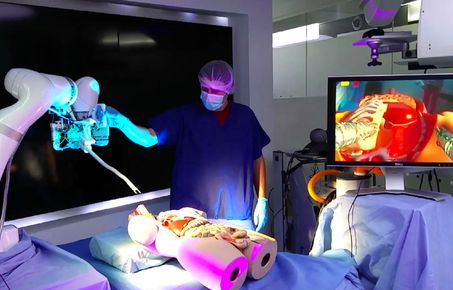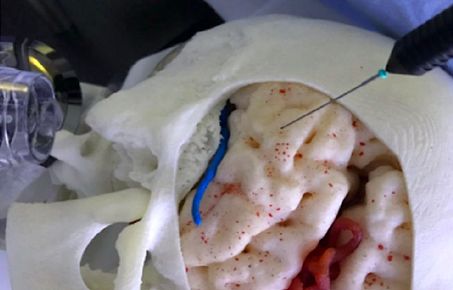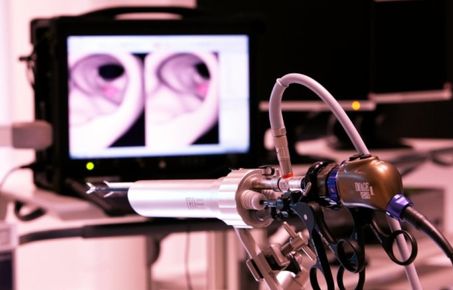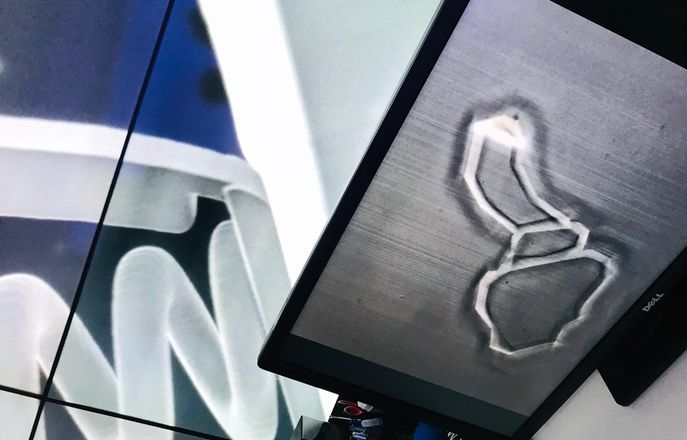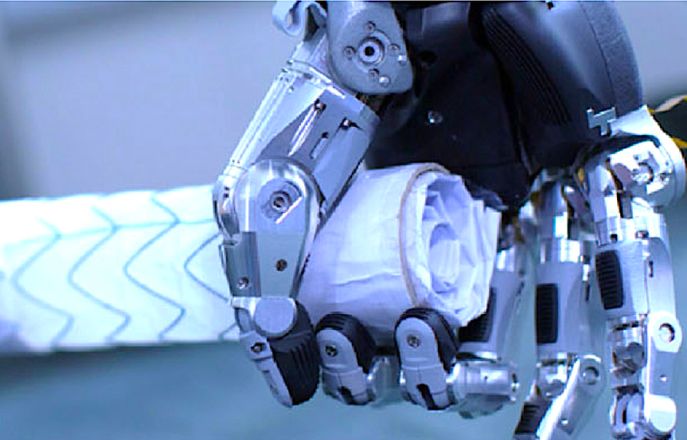Theme 1 - Case Study 2

Medical Biosensing - a multiplexed GFET measurement system
In medical applications, graphene field-effect transistors (GFETs) have been employed as sensors for the detection of biological biomarkers and other compounds in cancer, respiratory, immunologic, and neurodegenerative diseases due to graphene's high sensitivity towards immobilised molecules at its surface. Commonly, the resistivity of a graphene channel is measured under direct drain-source current (DC) and gate voltage sweep.
However, like other materials, the electrical response of graphene can also be studied in the form of impedance measurements using alternating drain-source current (AC), which alters the distribution and migration of ionic species across the graphene channel.
 Our research team developed a multiplexed electronic system to measure the electrical response of graphene field effect transistors (GFETs) deposited on a single array for different biomedical applications. We pioneered the research on the effect of AC stimulation over the graphene channel using time-multiplexing measurements: we change the voltages produced in the charge neutrality point of graphene – also known as Dirac point – when immersed in saline solutions with conductivity levels within the physiological range.
Our research team developed a multiplexed electronic system to measure the electrical response of graphene field effect transistors (GFETs) deposited on a single array for different biomedical applications. We pioneered the research on the effect of AC stimulation over the graphene channel using time-multiplexing measurements: we change the voltages produced in the charge neutrality point of graphene – also known as Dirac point – when immersed in saline solutions with conductivity levels within the physiological range.
We applied this multiplexed GFET measurement system to the detection of exosomes produced by cancer cells in the breast, colorectal and pancreatic tissues through chemical functionalisation of the graphene surface and immobilisation of specific binding molecules (antibodies).
As for the application in pancreatic cancer, our system was applied for the first time to the detection in real-time of exosomes in plasma samples collected from patients at the Royal Surrey Hospital, revealing the high affinity of the GFET measurement system to distinguish between healthy and cancer samples, the latter also achieving a good relation between the grade of the disease and shift on the Dirac point.
Lastly, the GFET measurement system was also applied to an actual worldly problem related to the fast detection of the Covid-19 virus in synthetic transport medium by functionalisation of the graphene surface with aptamers binding to the spike protein produced by SAR-Cov-2, reaching a limit-of-detection of 160 aM (103 virus particles per mL). (This was achieved in collaboration with the Department of Materials at Imperial College London, resulting in a publication in the journal Sensors & Diagnostics from the Royal Society of Chemistry [2]).
- [1] Bruno Gil Rosa, Salzitsa Anastasova, Benny Lo, "Graphene field-effect transistors array for the detection of liquid conductivities in the physiological range through novel time-multiplexed impedance measurements", Carbon, 193, 394 – 403, June 2022.
- [2] Lizhou Xu, Sami Ramadan. Bruno Gil Rosa, Yuanzhou Zhang, Tianyi Yin, Elias Torres, Olena Shaforost, Apostolos Panagiotopoulos, Bing Li, Gwilherm Kerherve, Dong Kuk Kim, Cecilia Mattevi, Long R. Jiao, Peter K. Petrova and Norbert Klein, On-chip integrated graphene aptasensor with portable readout for fast and label-free Covid-19 detection in virus transport medium, Sensors & Diagnostics, 1, 719 – 730, June 2022.
Theme 1 Highlights
Case Studies
Case 1 - Multifunctional Fibre Robot - Miniaturisation of arbitrary geometries via fibre drawing [Read More]
- Dr Temelkuran, Dr Abdelaziz and Mr Zhao
Case 2 - Medical Biosensing - a multiplexed GFET measurement system [Read More]
- Dr Rosa and Dr Anastasova
Research Outcomes
To know more about our Research Outcomes (Key Findings, Research Databases and Models, Research Tools and Methods, Collaboration, Software and Technical Products, Intellectual Property and Engagement Activities), please visit UKRI - Micro-Robotics for Surgery (EP/P012779/1) website.



